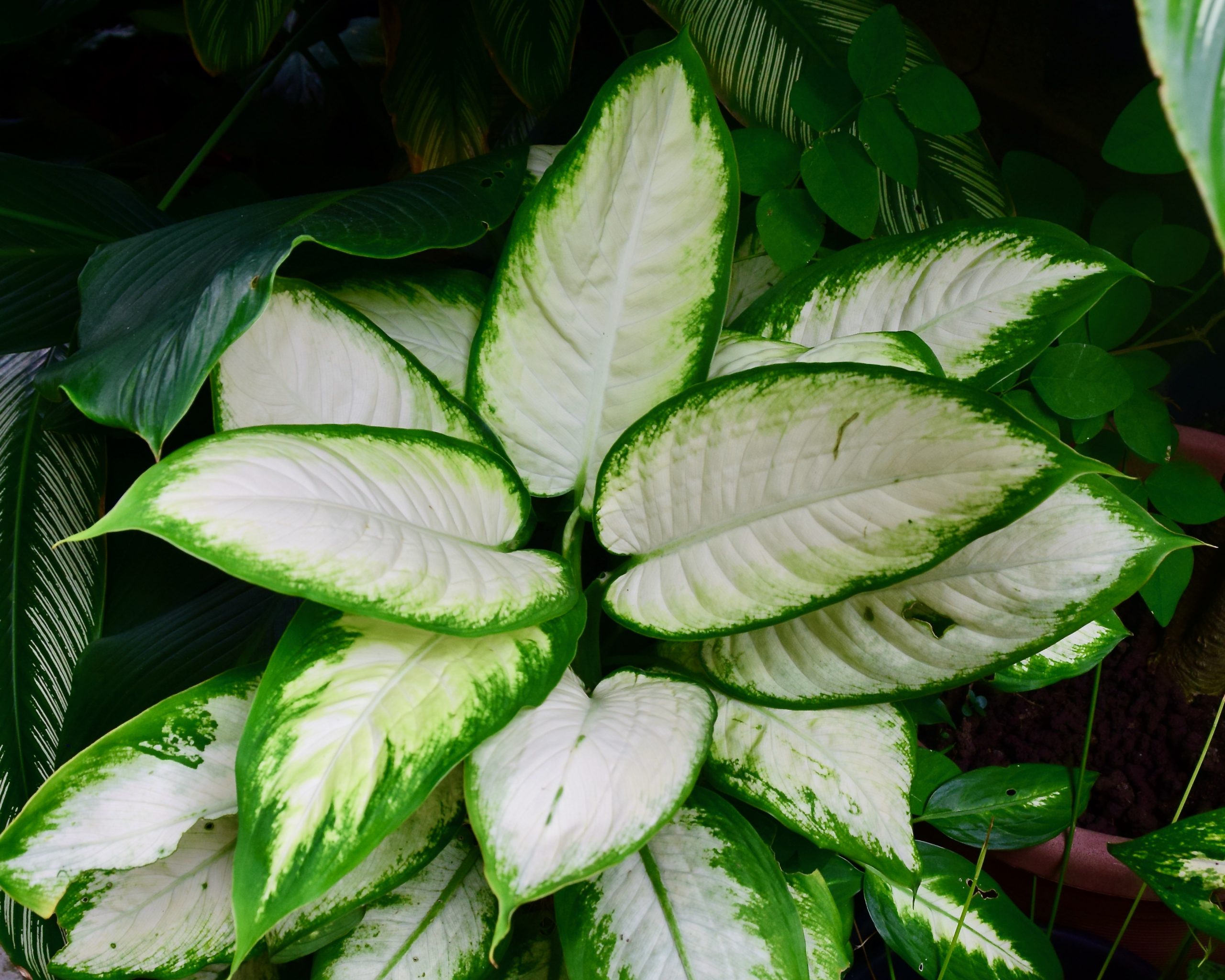Understanding Dieffenbachia Poisoning
Effects of Calcium Oxalate
Dieffenbachia, often known as dumb cane, is poisonous due to the presence of calcium oxalate crystals. These crystals, called raphides, are needle-like structures that cause mechanical injury when chewed or digested. Upon contact, they can lead to an immediate painful burning sensation in the mouth, throat, and tongue, causing swelling and potentially making it difficult to speak or swallow (The Spruce).
Raphides act by penetrating the mucous membranes, leading to microtrauma and releasing the calcium oxalate into the tissues. This causes intense discomfort and potential damage to the gastrointestinal tract if ingested. Skin contact with the plant’s sap can also result in irritation and pain (Poison).
Symptoms of Ingestion
Ingestion of Dieffenbachia can lead to a range of immediate and painful symptoms. The most common reactions include a severe burning sensation in the mouth and lips, accompanied by swelling and the potential formation of blisters, particularly if the stem is chewed.
The high concentration of raphides in all parts of the plant makes Dieffenbachia particularly harmful. These symptoms can persist, causing significant discomfort over an extended period, sometimes up to two weeks. This persistent reaction is often severe enough to impair speech, which is why Dieffenbachia is colloquially referred to as “Dumb Cane” (UConn Home and Garden Education Center).
[For more details on safely handling Dieffenbachia and preventing yellow leaves, visit our guide on dieffenbachia plant care.]
Care and Prevention
Yellowing Leaves and Plant Care
Yellowing leaves on a Dieffenbachia, commonly known as Dumb Cane, are often a sign of improper watering. Overwatering or underwatering can disrupt the plant’s ability to uptake nutrients, leading to leaf discoloration. It’s crucial to check the soil moisture regularly and water only when the top of the soil is dry. Allowing extra water to sit in the saucer can cause root rot, exacerbating the issue. Detailed information on caring for your plant can be found in our article on dieffenbachia yellow leaves.
To ensure your Dieffenbachia thrives, consider the following:
- Soil: Use well-draining soil to prevent waterlogging. Refer to our guide on the best dieffenbachia soil mix.
- Watering: Water the plant when the top inch of soil feels dry. Check out our dieffenbachia watering tips for more detailed advice.
- Light: Place your Dieffenbachia in indirect light to avoid leaf burn. Learn more in our article on dieffenbachia light requirements.
Handling and Safety Measures
Dieffenbachia contains calcium oxalate crystals, which are toxic if ingested or come into direct contact with the skin. Implementing proper handling and safety measures is crucial for both pet owners and families.
Consider the following preventive steps:
- Placement: Keep the plant out of reach of small children and pets. For more details on pet safety, see our page on dieffenbachia toxic to cats.
- Personal Protection: Wear gloves when cutting or trimming the plant to avoid skin irritation. Dispose of cuttings safely to avoid accidental ingestion by pets or children.
- First Aid: In case of skin contact or ingestion, immediate actions are necessary. Refer to our article on first aid for skin contact for guidance.
By taking these precautions, you can enjoy the beauty of your Dieffenbachia plant while ensuring the safety of your household. For further reading on plant care, visit the page on dieffenbachia plant care.
Responding to Exposure
First Aid for Skin Contact
If the sap of Dieffenbachia comes into contact with the skin, it can cause irritation, redness, and swelling. Immediate first aid steps are crucial to minimize discomfort and prevent further complications.
- Wash the Area: Immediately wash the affected area thoroughly with soap and water for at least 15 minutes.
- Avoid Scratching: Resist the urge to scratch the irritated area to prevent further skin damage.
- Seek Medical Attention: If the sap comes into contact with the eyes, irrigate with water for at least 15 minutes and seek medical attention if severe symptoms persist.
For more information on skin care related to plant exposure, refer to dieffenbachia leaf problems and dieffenbachia brown spots.
Immediate Actions for Ingestion
Ingestion of Dieffenbachia due to its raphides (needle-like calcium oxalate crystals) can lead to significant discomfort and potentially severe symptoms.
- Do Not Induce Vomiting: Inducing vomiting can cause further damage to the gastrointestinal tract.
- Rinse Mouth: Rinse the mouth thoroughly with water to remove any plant material. Ensure the person does not swallow the water.
- Seek Medical Help: Immediate consultation with medical professionals or a poison control center is essential for proper care. In severe cases, symptoms like excessive drooling, difficulty swallowing, and loss of speech can occur. Swollen, red, or irritated rashes can also manifest if the plant sap contacts the skin.
Ensure the safety of household pets as well by referring to our article on dieffenbachia toxic to cats for further details. For preventative measures, consider reading about dieffenbachia plant care.
For quick reference, here is a summary table of symptoms and actions:
| Exposure Type | Symptoms | Immediate Actions |
|---|---|---|
| Skin Contact | Redness, Swelling, Dermatitis | Wash area with soap and water for 15 minutes |
| Eye Contact | Eye Irritation, Corneal Abrasions | Irrigate with water for 15 minutes, seek medical attention |
| Ingestion | Mouth Pain, Drooling, Difficulty Swallowing, Loss of Speech | Rinse mouth, seek immediate medical help |
Stay informed about dieffenbachia propagation and ensure the safety of everyone in your household by adhering to these first aid measures.




